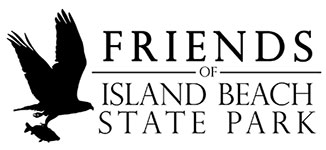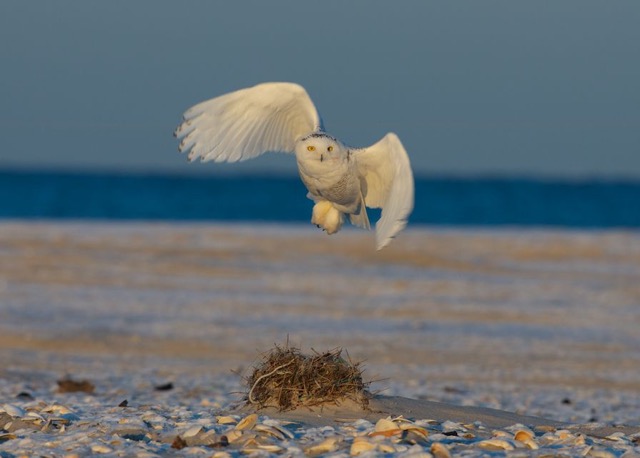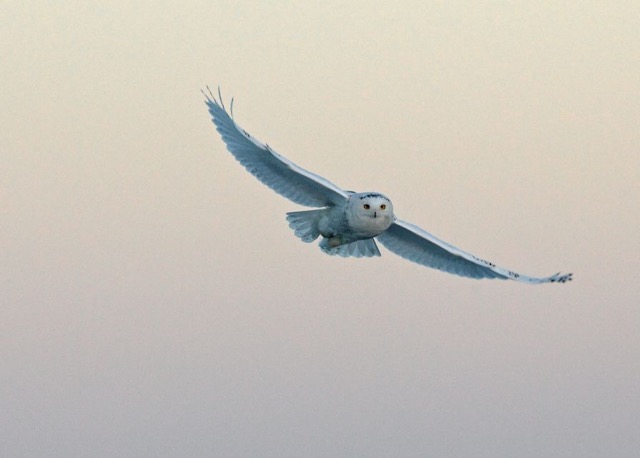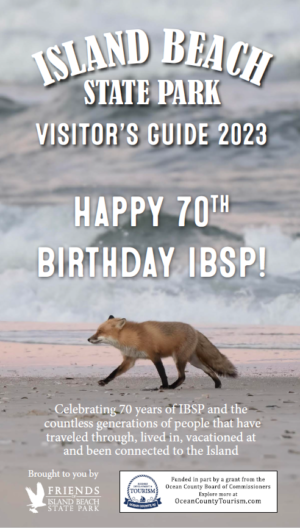By Jim Merritt, Past President of the Friend of Island Beach State Park
Snowy Owls ( Bubo scandiacus) have returned to Island Beach.
They spend their summers on their breeding grounds in the Arctic, and then fly as far south as Florida during the winter. These beautiful birds have yellow eyes and a black beak. They are between 20 inches and 28 inches tall, making them one of the largest owls in North America. They are mostly bright white. Females may be distinguished by black spots on their feathers. They are often spotted perched on the crests of the higher primary dunes along the beach because they hunt by a sitting and waiting strategy for their prey to pass by. Island Beach provides plenty of good sources of food as the diet of a snowy owl includes: mice, rabbits, ducks, and gulls.
Birdwatchers travel from all over the country to view Snowy Owls at Island Beach. To capture close-up pictures of these birds, photographers set up tripods to support cameras with long telephoto lenses. The photos used in this article were taken by professional photographer and FOIBSP trustee Ray Hallgreen. Ray, who lives year-round just outside the park entrance, spends many hours 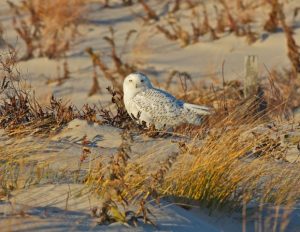 in the Park photographing the ocean and wildlife. He is extremely careful to avoid disturbing both the owls and their habitat. He always maintains a distance of 200 yards from any owl he is photographing. He stays on the beach or on trails making sure he does not walk on the dunes.
in the Park photographing the ocean and wildlife. He is extremely careful to avoid disturbing both the owls and their habitat. He always maintains a distance of 200 yards from any owl he is photographing. He stays on the beach or on trails making sure he does not walk on the dunes.
Unfortunately, many other photographers are not as careful. In an effort to get closer to the owl, they climb the dunes. These birdwatchers are unaware that their actions are killing the American Dune Grass (Ammophila breviligulata) because their footsteps break the delicate stems which lie just below the surface. These rhizomes, which may be as long as 10 feet, support a dense network of roots that anchor the dunes in place. In addition, the tall blades of dune grass trap wind-born grains of sand causing the dunes to increase in height.
Photographers and birdwatchers should be aware that Park Police patrol the beach and may issue a summons that can cost up to $1,500 for those caught walking in the dunes.
Snowy Owls are attracted to Island Beach because the Park has some of the highest dunes on the eastern seaboard. This is not by accident. Every year volunteers from Friends of Island Beach State Park plant tens of thousands of dune grass seedlings. In November and December of 2016 volunteers planted 50,000 plants. Friends’ efforts are helped by members of the NJ Beach Buggy Association, who set up miles of fencing to help trap windblown sand.
Come visit Island Beach State Park this winter. Even if you don’t see a Snowy Owl, your time in the park in the off-season will be well worth it.
